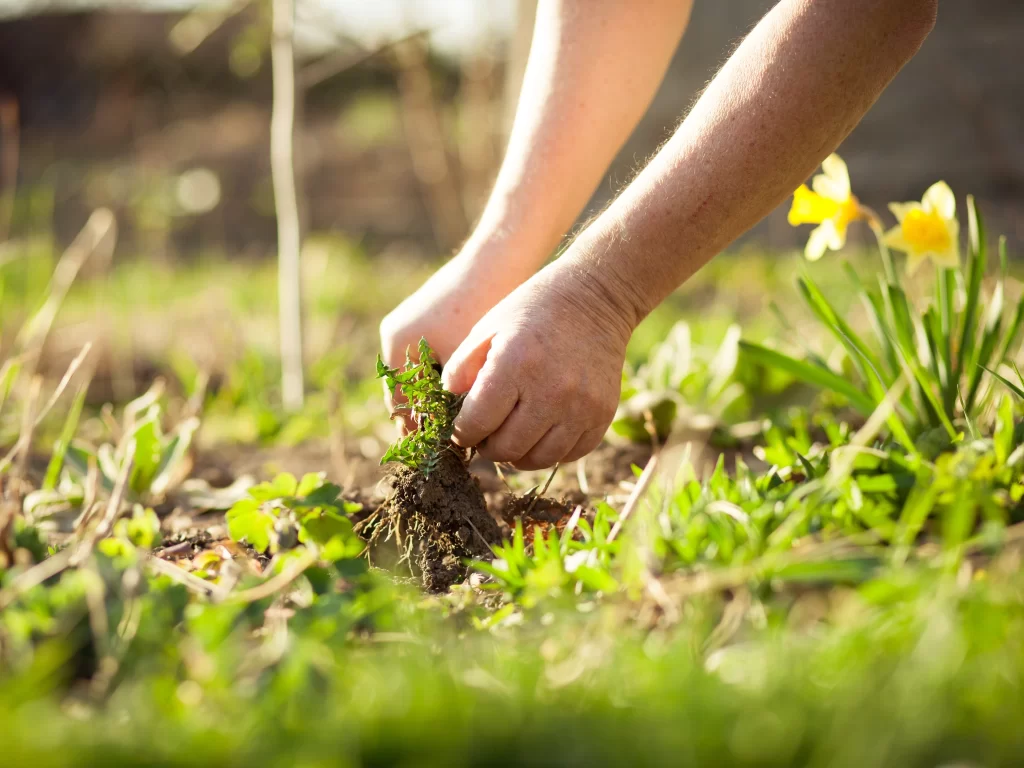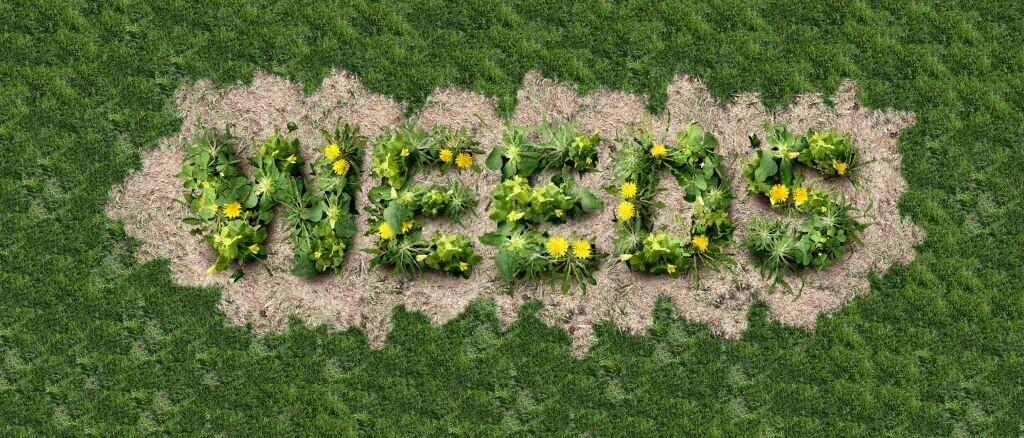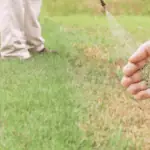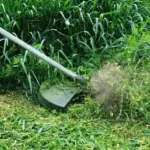When you come across a yard full of beautiful, manicured green grasses, it’s easy to fall in love with their appearance.
You don’t see the tons of hours and precise work the homeowner or gardener puts into the process to get the best results. One such process is consistently weeding the yard and checking and removing unwanted plants. But is pulling weeds a waste of time or not?
There are many different approaches to combating weeds and invasive plants. The most popular one is pulling them out by hand so they don’t affect your grass and other plants you’ve planted. When you keep weeds out of your lawn, you will reduce many gardening chores and keep pests at bay simultaneously.
This article helps you understand whether pulling weeds is a waste of time and how to remove weeds from your plants.
Is Pulling Weeds a Waste of Time?
Firstly, weeding is a task you must face if you care for your lawn by yourself. It’s always a battle that drags on over time because weeds constantly recur, especially when you least expect it.
Secondly, pulling weeds involves using your hands. That paints a picture of how strenuous it can get eliminating them.
Many homeowners and gardening experts consider pulling weeds a waste of time because of the stress. Also, a large yard means you’ll spend many hours outdoors pulling weeds. The weed type might prove too strong and require more effort to remove.
Generally, weed pulling is efficient and effective, particularly when you remove them from the roots.
Pros and Cons of Pulling Weeds

You already know that weed pulling can help you deal with weed problems. If you’re thinking of using your hands for the job, consider the following pros and cons:
Benefits of Weed Pulling
- Pulling weeds will give your lawn or yard a good appearance. That’s because weeds give your lawn a bad shape and look.
- Preventing weed growth before they get to the seed stage. That will prevent them from spreading and dominating your yard.
- Better plant growth. Pulling weeds gives your plants and grass more space to thrive. Your pants get adequate nutrients, water, and sunlight to grow healthily.
- On a personal level, you can pull weeds to exercise and burn some calories. Pulling weeds takes time and effort, so get some weight off while working.
Downsides of Weed Pulling
- Pulling grass is time-consuming. Consider a large lawn or garden, and you’ve got a good idea of the time and effort it takes.
- It is difficult to pull weeds because some weeds have deep roots and are awkward to hold. You might spend several minutes getting such weeds out of the ground.
- As challenging as pulling weeds is, it’s still a temporary solution. Weed may grow back, especially if the issues that caused them are not addressed.
- If you’re not careful while pulling weeds, other plants or their roots can get accidentally damaged.
- You might inadvertently spread weed seeds to other areas of your yard through the air or when they latch onto your clothes, shoes, and tools.
Understanding Types of Weeds

To effectively deal with weeds through any form of elimination, it’s essential to understand the types of weeds and their growth patterns.
With that, you can identify the weeds in your garden and determine the best way to deal with them. Some weed types include the following:
Annual Weeds
You can find annual weeds almost everywhere you look because they’re the most common weeds in gardens. They germinate and grow very fast, producing seeds multiple times within a year.
Also, annual weeds often spread rapidly and aggressively compete with your plants for resources, such as nutrients and space.
Perennial Weeds
Perennial weeds are different from annual weeds, even though they’re equally annoying. Further, their longer lifespans make them harder to tame and eliminate.
These weeds will grow from the roots or rhizomes and can resprout after being cut down. As a result, pulling them out may not stop them from growing back.
Understanding Growth Patterns and Likely Areas
The two weed types identified above are generic, with many different varieties of weeds under them. You need a firm understanding of the growth patterns of weeds for effective control.
For example, dandelion weeds have a taproot extending deep into the soil. Pulling such weeds out can be difficult; they can resprout if the root is not entirely removed. Conversely, weeds like clover are easy to pull out by hand, thanks to a shallow root system.
Additionally, knowing when and where weeds are likely to thrive is essential. Some weeds grow well in areas with bare soil or thin grass cover. In such cases, keep your garden well-mulched or plant ground cover plants that can help prevent weed growth.
Generally, weeds grow in areas with nutrient-rich soil and high water availability, so running soil tests and amending can help reduce them.
Natural Methods of Weed Control
There are several ways to deal with weeds in your yard, lawn, or garden. One such way is by hand pulling the weeds out of the soil. Other natural weed control methods include the following:
Organic Mulch
Using organic mulch is a natural and effective way to combat weeds. Mulch helps to suppress weed growth by reducing moisture and blocking sunlight.
It also helps retain soil moisture your plants need to survive. Common mulch types include shredded leaves, straw, and grass clippings.
Cover Crops
You can use cover crops to control weeds. When you plant such crops, they directly compete with weeds for resources.
You can plant cover crops like clover and rye between rows of crops or in empty garden beds. These crops will improve soil health by adding nutrients and organic matter.
Vinegar
Vinegar is helpful because it is an effective natural weed killer. Applying vinegar directly to the leaves of weeds can cause them to dry out and die.
For these reasons, it’s best to observe some caution when using vinegar, as it can also harm your plants. Make sure to only apply vinegar directly on the leaves of the weeds and not to your plants.
Chemical Methods of Weed Control
Chemical methods for controlling weeds are fast and effective. Herbicides will effectively get rid of weeds in your garden or yard. There’s a catch, though, because herbicides can be good and bad, depending on the application.
Chemicals control and kill weeds that compete with your plants, allowing your plants to thrive without competition for resources like nutrients and water. You will also save time and effort compared to other methods like pulling by hand. Further, many herbicides target specific weeds, leaving your plants in harm’s way.
Downsides to Chemical Weed Control
While using chemicals like herbicides can be fast and effective, there are downsides you must pay attention to. Here are some of them:
- Chemicals or herbicides can threaten the environment, including beneficial insects and wildlife.
- Herbicides might leach into groundwater or run off nearby streams and rivers, causing pollution.
- Repeated use of herbicides often leads to resistance from weeds, which makes them less effective in the long run.
Tips to Prevent Weed Growth
Having weeds in your garden, farm, or yard is almost inevitable. However, you can do your bit to prevent weed growth. Here are some tips to help you:
- Keep your yard or garden well-maintained and healthy.
- Adopt best practices for your plants, such as adequate watering, fertilizing, and removing dead plants and debris.
- Understand the area and the type of weeds likely to grow there.
Conclusion
Pulling weeds is one of the best ways to protect your plants from them. It involves using your hands to take them out, often from the roots.
From the article, it’s clear that pulling weeds is not entirely a waste of time, especially if you run a small garden or have a small lawn yard. On the other hand, pulling is a waste of time because it is stressful and time-consuming. Chemical herbicides are alternatives, but you must apply them carefully.
Now that you know this, you can keep weeds at bay by maintaining your lawn and understanding the likely causes of weed growth in the environment. If you must use your hands, do so when the sun is down.






